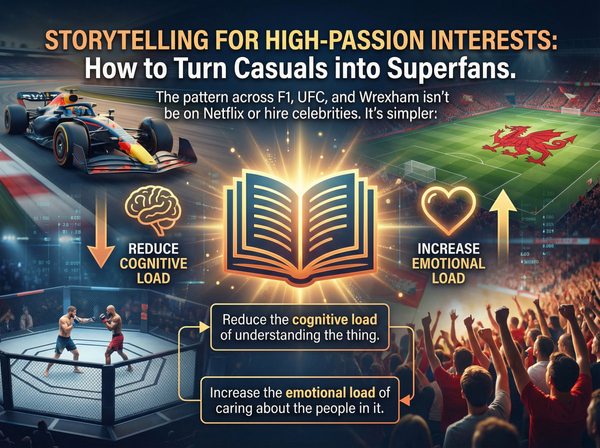Why Retailtainment is the Future of In-Store Shopping
The high street is fighting back. For years, brick-and-mortar retail has faced an existential threat from the convenience and endless aisles of e-commerce.
Shoppers can now compare prices and buy with a tap from anywhere. So, what's left for the physical store?
The answer isn't just about products; it's about experiences - Retailtainment.
Retailtainment is the strategic blend of retail and entertainment, transforming shopping into an engaging, memorable, and often playful experience.
It's about moving beyond mere transactions to create an environment where shoppers want to spend time, connect with a brand, and genuinely enjoy themselves.
What is Retailtainment?
Retailtainment is the deliberate effort to infuse elements of leisure, fun, and interaction into the retail environment. It's about stimulating the senses, sparking curiosity, and fostering an emotional connection that online shopping simply can't replicate.
The goal? To drive foot traffic, increase dwell time (how long customers stay in store), boost conversion rates, and cultivate deeper brand loyalty. It transforms a store from a warehouse of goods into a destination.
Why Now? The Forces Driving Experiential Retail
Several factors are making retailtainment not just a nice-to-have, but a necessity:
- E-commerce Saturation: When everything is available online, physical stores must offer something fundamentally different – an immersive, tactile, and social experience.
- The Experience Economy: Consumers, especially younger generations, increasingly value experiences over mere possessions. They want stories, memories, and engagement.
- Social Media Power: An exciting in-store experience is inherently shareable. Shoppers become content creators, generating authentic buzz and FOMO for the brand.
- Community Hubs: Stores can become gathering places, fostering a sense of community around a shared interest or lifestyle, something algorithms can't replicate.
Retailtainment in Action: Beyond the Shelf
The possibilities for retailtainment are vast, limited only by imagination and budget. Here are some popular and innovative approaches:
- Interactive Digital Displays: Think AR mirrors that let you try on clothes without changing, or digital screens that respond to gestures to showcase products.
- Workshops & Classes: A kitchenware store hosting cooking classes; a DIY store offering woodworking workshops; a beauty retailer providing makeup masterclasses. These create engagement and educate.
- In-Store Events & Performances: Live music, author readings, fashion shows, product launch parties with celebrity appearances, or even pop-up fitness classes in an athletic wear store.
- Food & Beverage Integration: Cafes, juice bars, or even full restaurants within a retail space encourage longer stays and offer an additional revenue stream.
- Themed Environments & Immersive Design: Stores designed to feel like a fantastical world, a cozy home, or an art gallery, creating a unique atmosphere.
Gamification & Challenges
This is where it gets really exciting, directly addressing how to engage shoppers with incentives:
- The Mystery Discount Challenge: Set up a quick, fun game (e.g., a digital wheel spin, a memory game, or answering a trivia question about the brand). If a shopper completes the challenge, they unlock a discount (e.g., 10%, 20% off their purchase or free gifts).
- Styling Speed Test: For fashion or home goods, challenge shoppers to put together an outfit or room aesthetic within a time limit using in-store products. The best (or fastest) gets a discount or personal styling session.
- Social Media Challenge: Encourage shoppers to participate in a specific in-store booth or create a short video using a branded hashtag for prizes.
These challenges not only provide a tangible reward but also create a sense of achievement and excitement, making the purchase feel more earned and special.
The Tech Enablers of Retailtainment
Modern retailtainment thrives on technology, which acts as the invisible backbone for many immersive experiences. It's about leveraging tools to deepen engagement and personalize interactions:
- Data Analytics & Personalization: Understanding shopper preferences through loyalty programs, app usage, or in-store beacon technology allows retailers to tailor experiences. Imagine a digital display greeting a loyalty member by name and suggesting products based on their past purchases.
- Augmented Reality (AR) & Virtual Reality (VR): Beyond virtual try-ons, AR can layer digital content onto the physical store, offering interactive games or product information. VR can transport shoppers to a different world to experience a product's benefit, like testing a camping tent in a virtual mountain range.
- AI-Powered Interactions: Chatbots can provide instant customer service or product recommendations, while AI-driven personalized music playlists can enhance the store's atmosphere.
By strategically integrating these technologies, retailers can create more dynamic, personalized, and truly unforgettable shopping adventures.
Successful Brands Leading the Retailtainment Charge
Many forward-thinking brands have already mastered the art of retailtainment, turning their stores into must-visit destinations:
- LEGO Stores: Far more than just places to buy bricks, LEGO stores are interactive play zones. Children can build creations in dedicated play areas, view giant LEGO models, and even create custom minifigures or mosaic portraits, making every visit a creative adventure.
- Lululemon: Beyond selling premium activewear, Lululemon stores often host free yoga classes, meditation sessions, or community runs. They position themselves as hubs for wellness and community, fostering a lifestyle around their brand.
- Nike House of Innovation: These flagship stores offer unparalleled personalization and immersive experiences. Shoppers can test shoes on a mini basketball court, customize sneakers with laser engraving, or use the Nike app to scan products and access detailed information or unlock exclusive content.
- Sephora: A pioneer in beauty retail, Sephora offers beauty classes, virtual try-on tools, and expert consultations. Their Beauty Hubs allow customers to experiment with products and techniques in a supportive, interactive environment.
The Benefits of Embracing Retailtainment
Beyond the initial wow factor, retailtainment offers significant commercial advantages:
- Increased Foot Traffic & Dwell Time: People visit your store because it's fun, not just because they need something.
- Higher Conversion Rates: Engaged shoppers are more likely to buy.
- Enhanced Brand Loyalty: Positive experiences build emotional connections and foster repeat visits.
- Higher Average Transaction Value: Engaged customers often spend more.
- Valuable Data & Insights: Interactive experiences can gather data on customer preferences and behavior.
- Positive Word-of-Mouth & Social Media Buzz: Your customers become your best marketers.
- Differentiation: It sets you apart from competitors, both online and offline.
The Future is Fun
The future of brick-and-mortar retail isn't about competing with e-commerce on price or convenience. It's about offering something fundamentally different: joy, discovery, connection, and entertainment.
By embracing retailtainment, you're selling an unforgettable experience that keeps customers coming back for more.
Keep Crushing!
- Sales Guy

